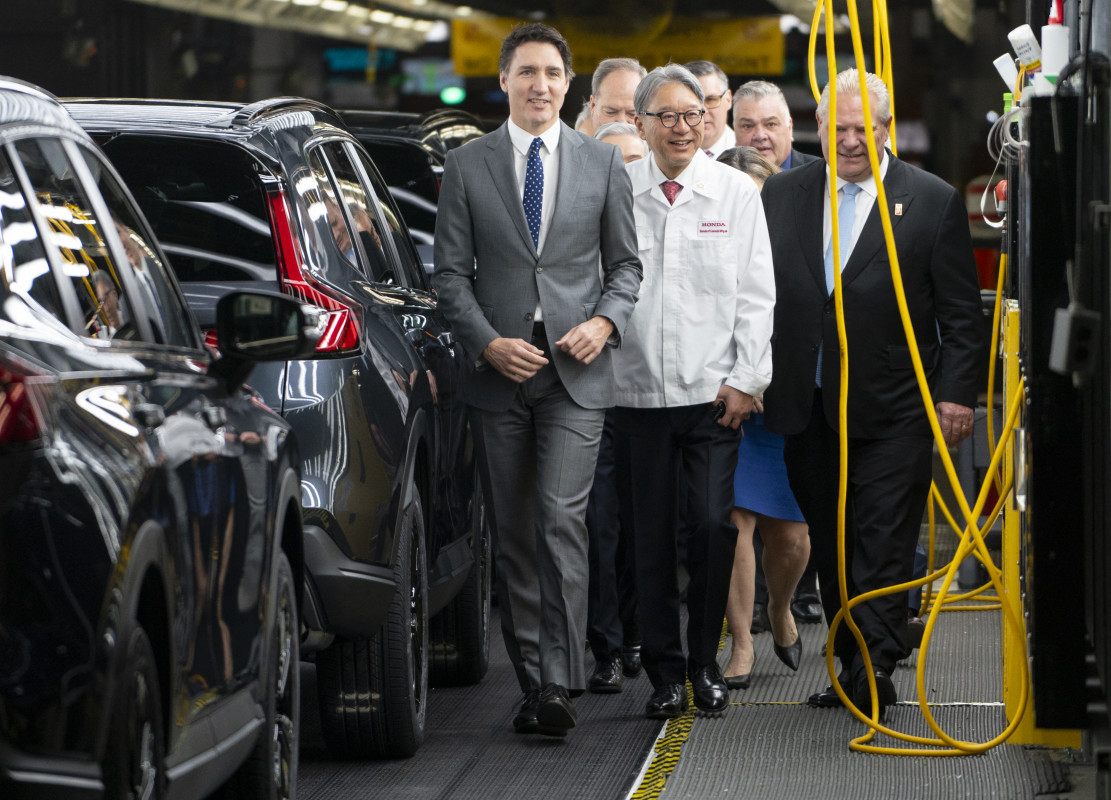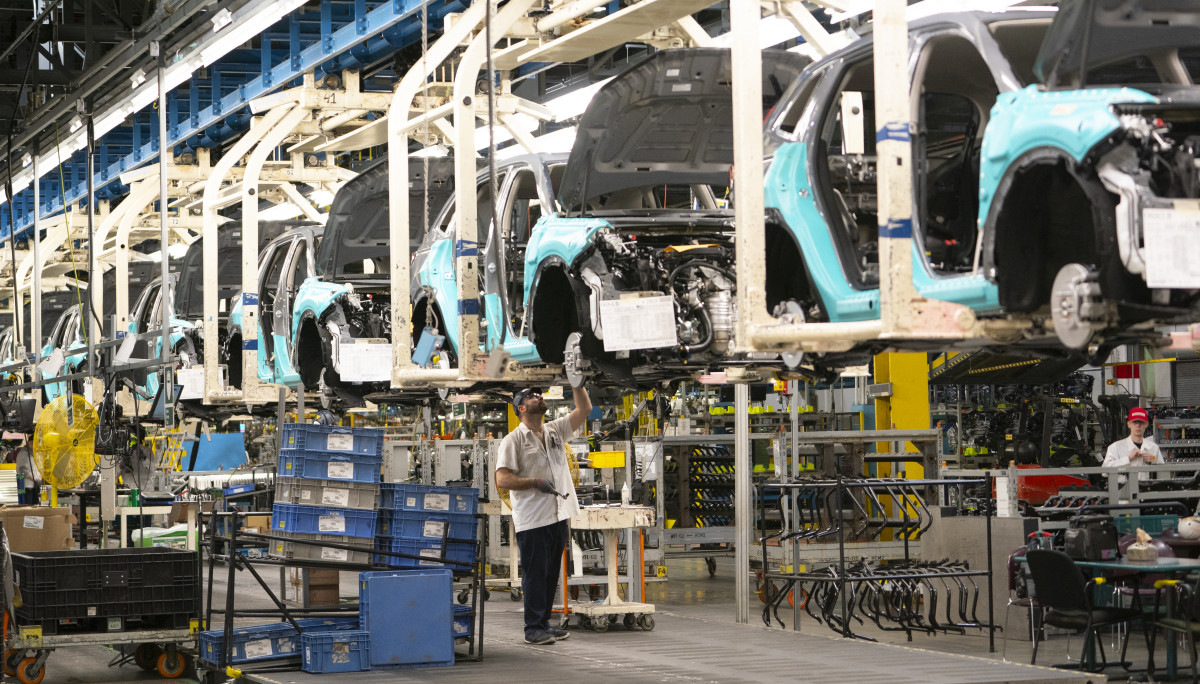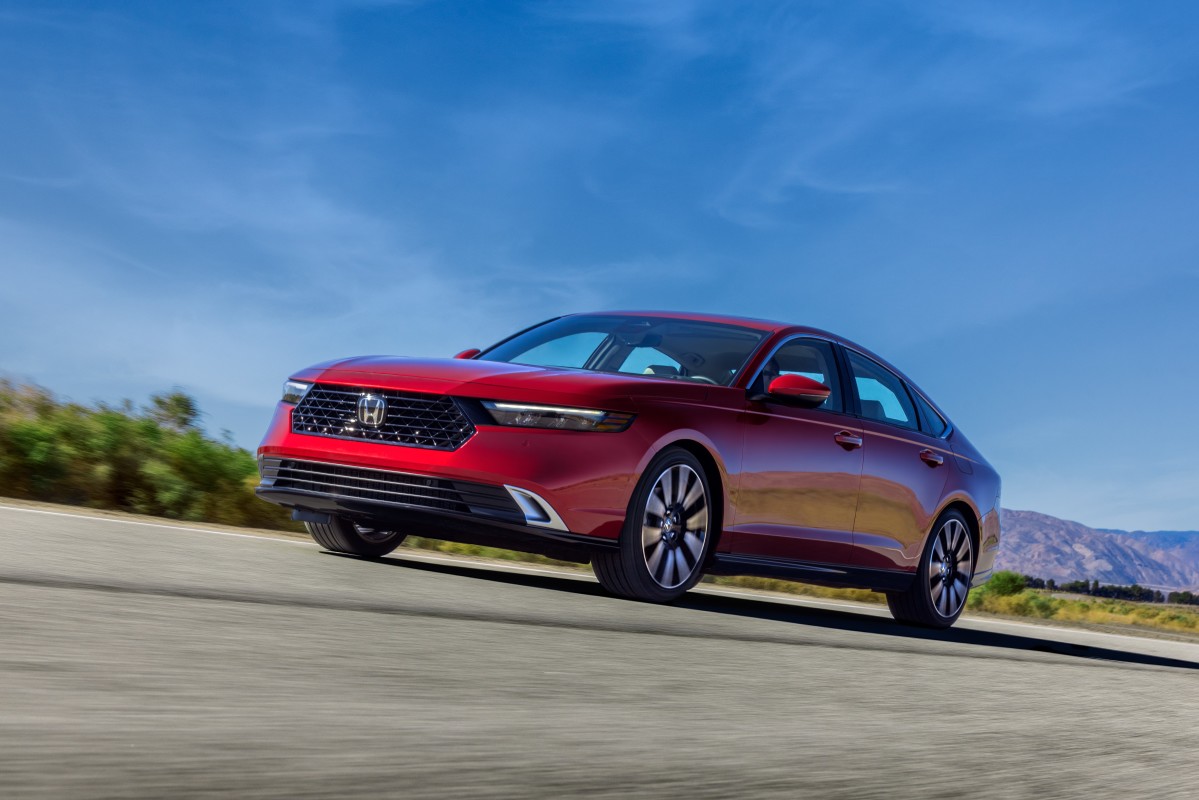The Japanese automaker is trying to expand its U.S. manufacturing base
Japanese automaker Honda may make even more of its U.S. lineup in the United States to shield itself from the Trump Administration’s harsh automobile tariffs. According to a new report by Nikkei Asia released on April 15, the makers of the Accord, Civic, and CR-V are considering plans to dramatically increase their localized production in the United States.
The Japanese business newspaper claims that Honda plans to increase U.S. vehicle production by as much as 30% over the next two to three years. This decision was triggered by President Trump’s 25% levy on imported cars and auto parts into the country, as it aims to produce upwards of 90% of cars sold in the U.S. on home turf.

PETER POWER/AFP via Getty Images
Previously, the United States-Mexico-Canada Agreement (USMCA) allowed completed automobiles to flow between the three countries tariff-free as long as a certain percentage of parts originated from North America. Japanese automakers used this trade agreement to their advantage, creating a network that exports cars to the United States from its northern and southern neighbors, where labor costs are lower.
As for Honda, the USMCA and NAFTA that came before it allowed the automaker to annex some CR-V and Civic production from its Alliston, Ontario plants to supply its U.S. dealers and also import the lower-cost Honda HR-V and Acura ADX compact crossovers from its factory in Celaya, Guanajuato, Mexico. According to Nikkei, the company plans to move production of the CR-V crossover from Canada to the U.S. and HR-V production from Mexico to the States.

PETER POWER/AFP via Getty Images
Nikkei states that these moves to relocate production, along with changes in the parts supply chain, are expected to take Honda at least two years in stages. The Trump administration’s tariffs would have cost Honda an estimated $4.57 billion annually. While labor and other expenses continue to climb in the U.S., the automaker determined it was more effective to take action aimed at offsetting the impact of the tariffs.
Honda is building on a strong American manufacturing foundation
Of the nearly one-and-a-half million cars Honda sold in the U.S. last year, about one million, or 70% of them, were actually built in the U.S. However, to supplement some of its production, Honda imports about 500,000 vehicles into the U.S., including 300,000 from the Great White North, where its Alliston, Ontario plant makes some of the CR-V and Civic models that are currently sitting on Honda dealerships.
Honda has a certain advantage that some of its other rivals do not have: an established manufacturing base in the United States. Honda was the first Japanese auto manufacturer to begin building cars in the United States, and its Marysville Auto Plant in Marysville, Ohio, began making cars on Nov. 1, 1982. Today, it is still home to the Honda Accord and the Acura TLX and Acura Integra sedans.
Honda produces vehicles in four total plants across the American Midwest and South, including the CR-V and Acura MDX and RDX in East Liberty, Ohio, the Odyssey minivan, Passport and Pilot SUVs, and Ridgeline truck in Lincoln, Alabama, as well as the Civic Hatchback and CR-V in Greensburg, Indiana. According to documents made available by the NHTSA as part of the American Automobile Labeling Act (AALA), Honda has some of the cars with the largest US/Canada parts content for the 2025 model year, including the Alabama-built Honda Ridgeline Trailsport, which boasts 75% US/Canada parts content.

Honda
Final thoughts
In a new note sent to investors on April 15, Wedbush Securities analyst, Tesla Bull, and social media figure Daniel Ives noted that on April 14, Trump “floated the idea of delaying/pausing the auto tariffs facing the Detroit Big 3 and Tesla among foreign automakers.” Nonetheless, if it doesn’t actually happen, Ives’s note and this news indicate that this kind of onshoring does not happen in a bubble, nor does it occur overnight—there is no on/off switch for manufacturers to flip.
Although it may sound like an exaggeration when Ives says that “the concept of a US-made car with all US parts is a fairy tale fictional narrative,” it is based on a semblance of truth. Honda’s “most American car,” the Alabama-built Honda Ridgeline Trailsport, boasts just 75% US/Canada parts content, meaning 25% still comes from somewhere else.
Honda, in this case, is playing with the “best case scenario” compared to other manufacturers like Mazda and Mitsubishi, the latter of which doesn’t have any U.S. production. It essentially started 20 spaces past Go and has long collected its $200, as Honda onshored a large part of its car production more than 40 years ago. Even for them, it’ll take about two years to make nearly 90% of its U.S. offerings in the USA. With the pace the Administration is going, who knows what will actually happen by then.